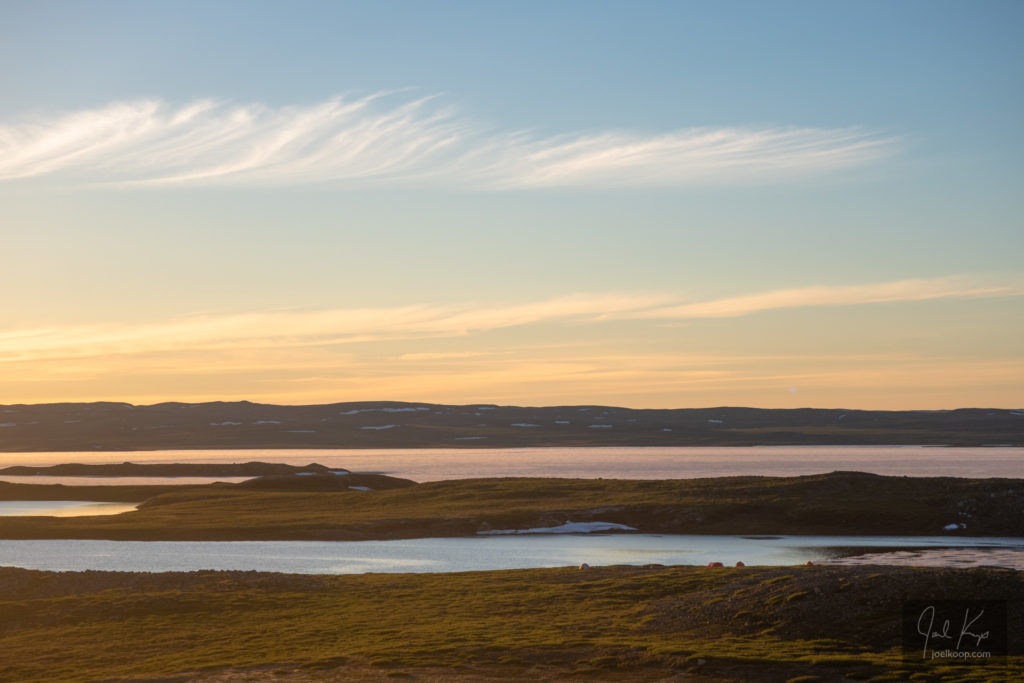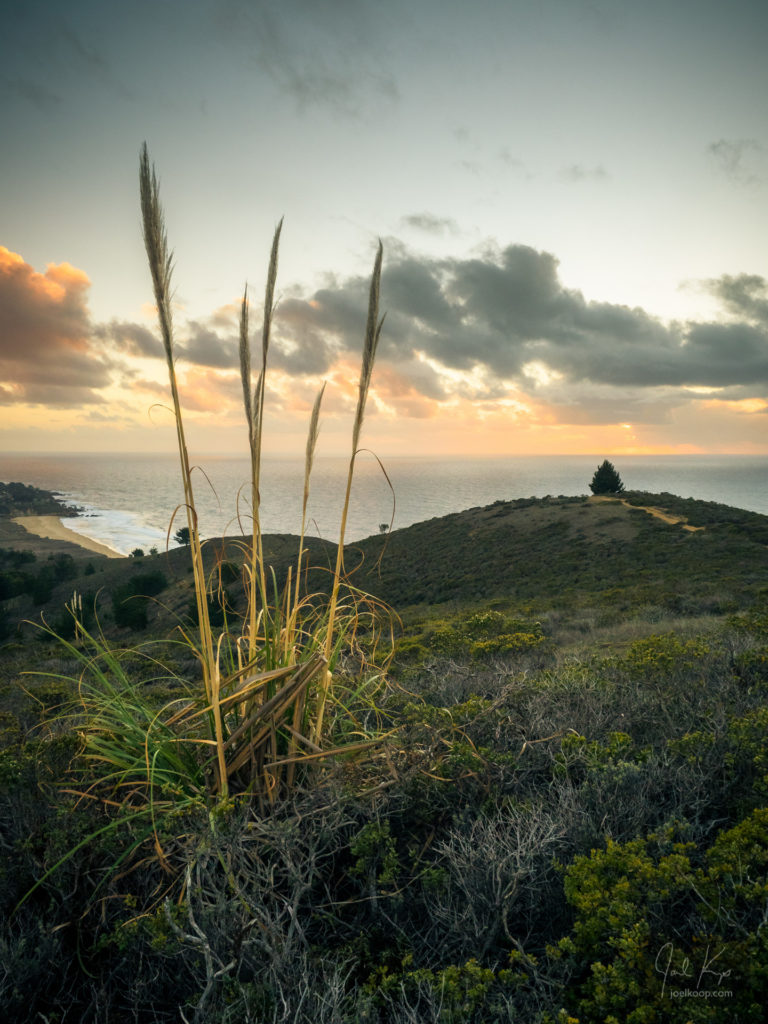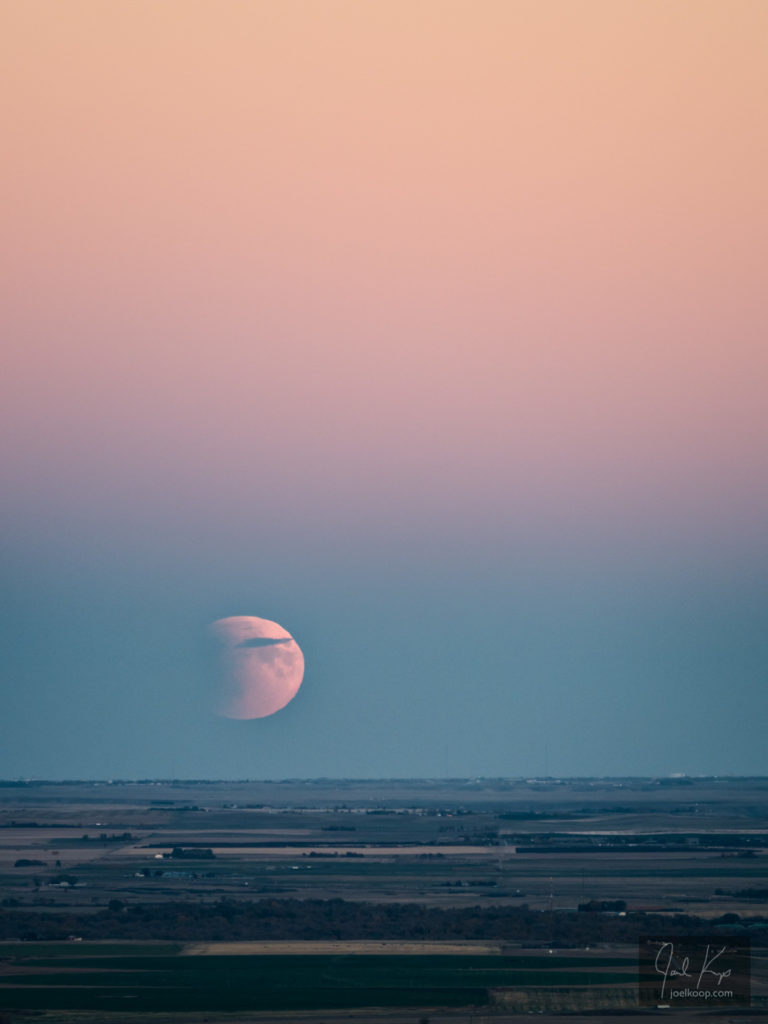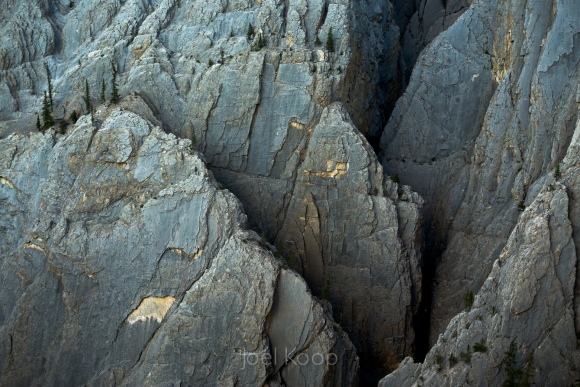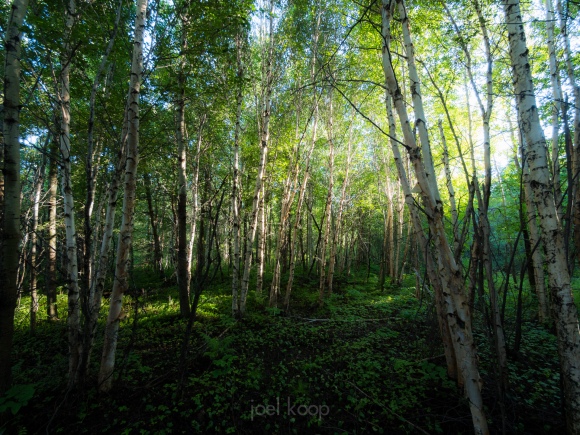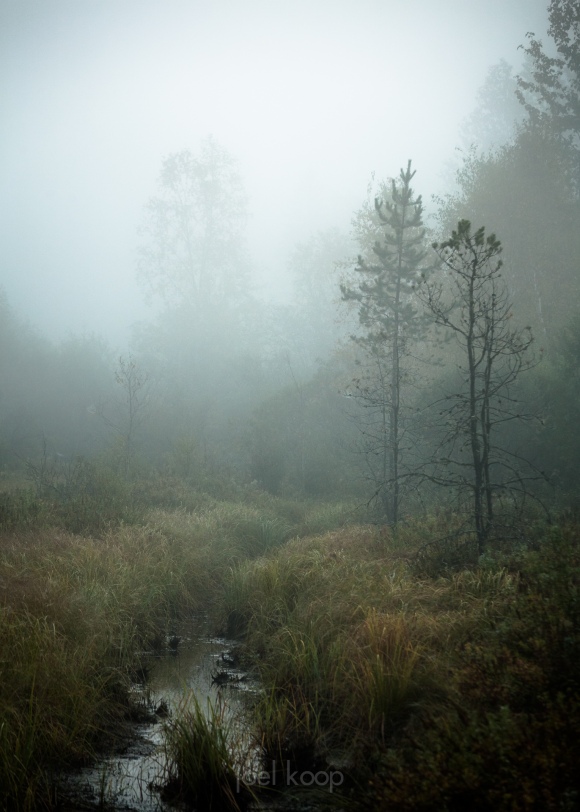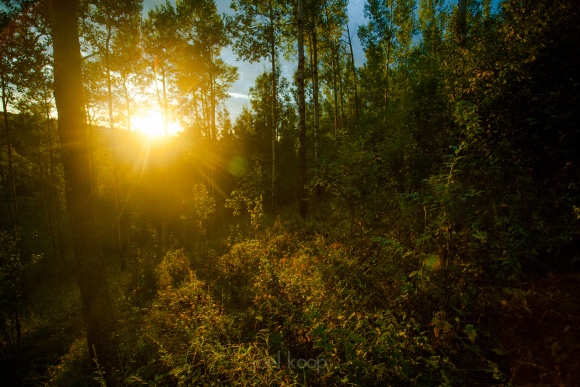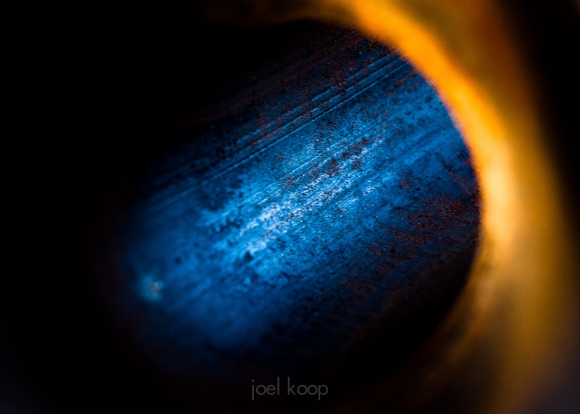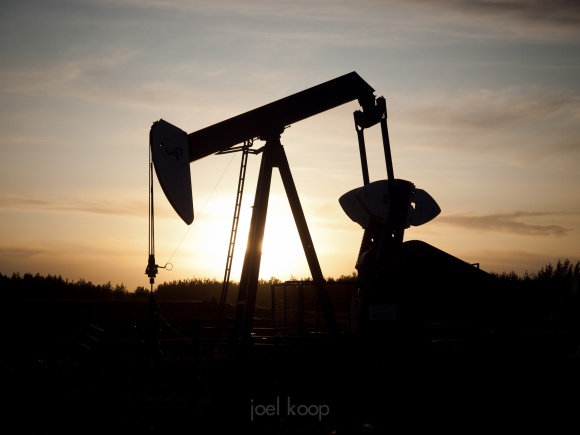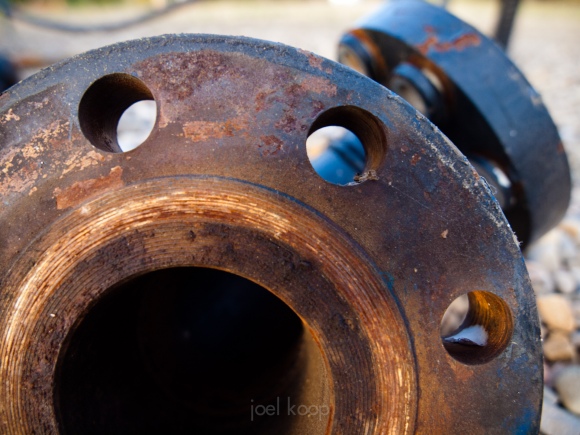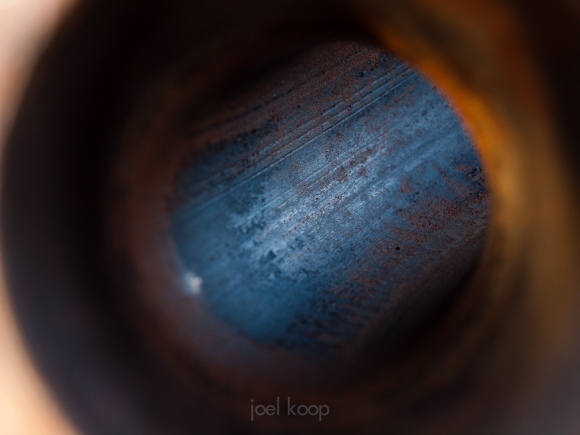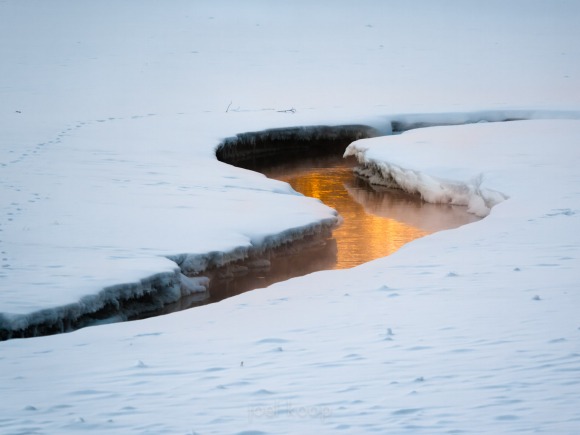At craft sales, I always have tags on the back of my photos with a title and short description. People seem to enjoy this, but sometimes a short tag is not enough. This photo, for instance, is only partially explained by the tag which says “Oilfield Remains”. So I often get questions, and I try to explain, but usually fail miserably. Well, here’s my (hopefully successful) explanation of the photo.
The story starts with me and Jason driving around the countryside finding nice things to take pictures of. This is a fairly common occurance in the life of a nature photographer. Oil rigs are also a fairly common occurance around Edmonton, so the two often coincide. We found this lovely oil rig just as the sun was setting, and of course I took the standard oil-rig-sunset shot which is the same as twenty billion other oil-rig-sunset shots. But hey, it gives me some context for the story.
Getting good photos means investigating things a little more, and while we’re wandering around the rig, we find (among other things) these random pieces of pipe on the ground. Rusty texture and curved lines catch my eye, and soon I’m down on the ground taking photos of this pipe elbow.
Well, in this photo there’s a bit too much going on for there to be a clear focal point, and the lines aren’t leading where they need to be leading. So I got a little closer, focused into the pipe, and took the photo you see at the top.

